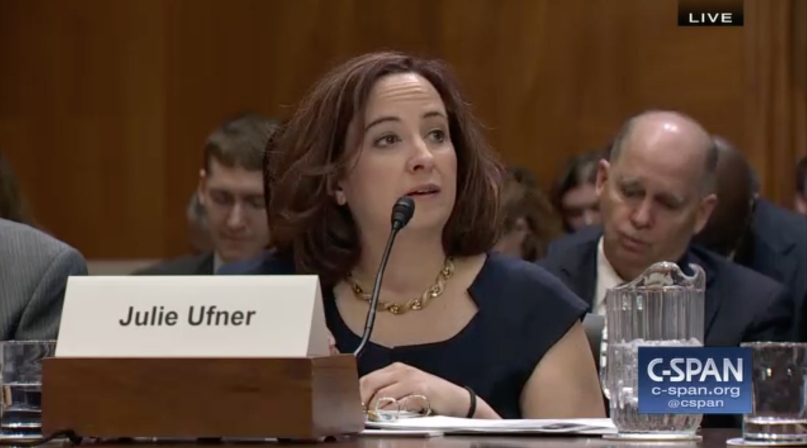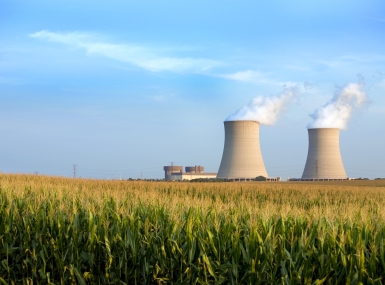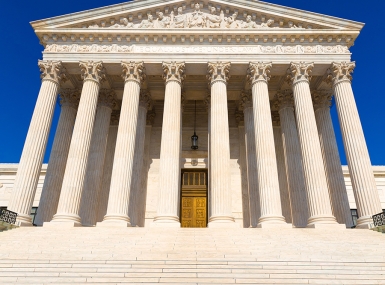NACo talks water issues before Senate Committee
Upcoming Events
Related News

NACo asks Senate for framework for meaningful consultation between Army Corps of Engineers and state and local governments on pending rules and policies that directly impact them
In testimony before the Senate Environment and Public Works Committee Jan. 10, NACo Associate Legislative Director Julie Ufner discussed the central role counties play in strengthening America’s water infrastructure and how the Water Resources Development Act (WRDA) can help by fostering collaboration on water projects between local governments and the U.S. Army Corps of Engineers (Army Corps).
Specifically, the testimony highlighted four key points:
- Water infrastructure is integral to counties’ ability to protect public safety and grow our economies.
- Throughout the West, counties face unique water challenges.
- WRDA helps local communities help themselves.
- To build upon past successes and address current challenges, there are a number of ways that Congress can improve and strengthen WRDA to help western counties.
Learn More
To view Ufner’s testimony, go to “America’s Water Infrastructure Needs and Challenges”
To read Ufner’s written statement click here.
Ufner shared several examples of how WRDA and the Army Corps can help support local economies. Juneau, Alaska, for one, relies heavily on its port to support the tourism, mining and fishing industries that drive the local economy and contribute $2.6 billion each year to the GDP. Park County, Wyo. is currently working with the Army Corps to replace roads and bridges damaged by mountain flooding and ice jams in its local waterways. These roads and bridges provide access to federal public lands and are crucial for the county’s economic stability.
Ufner also underscored the many challenges counties face in protecting the safety and reliability of the country’s aging water infrastructure. Their resources are constrained by increased project costs, federal regulatory barriers and, especially in Western counties, high elevations, arid landscapes and strong population growth that puts further stress on an already limited supply of water.
Ufner made a strong pitch for Congress to provide a framework for meaningful consultation between the Army Corps and its state and local governments on pending rules and policies that directly impact them.
“We believe this will solve many of the conflicts that exist now between the Army Corps and its intergovernmental partners.”
Historically, WRDA bills authorize water resource projects and policies for navigation, flood control, hydropower, recreation, water supply and emergency management for the U.S Army Corps of Engineers. The legislation is often passed on a biennial basis and tends to address county interests related to ports and harbors, inland waterways, levees, dams, beach replenishment, ecosystem restoration and other water projects.
Only three WRDA bills — WRDA 2007, the Water Resources Reform and Development Act of 2014 (WRRDA) and the Water Infrastructure Improvements for the Nation Act of 2016 (WIIN) — have been enacted in the past decade.
Julie Ufner, associate legislative director, and Austin Igleheart, legislative associate, contributed to this report.
Attachments
Related News

White House signs executive orders to advance nuclear power
On May 23, President Trump signed four executive orders focused on expanding the nuclear energy industry. The executive orders aim to position nuclear power as a key contributor to energy reliability, economic growth and national security — especially as artificial intelligence, advanced manufacturing and military operations increase demand for stable, high-density power sources.

U.S. Supreme Court issues unanimous decision in landmark National Environmental Policy Act case
On May 29, the U.S. Supreme Court issued a unanimous decision in Seven County Infrastructure Coalition v. Eagle County, Colorado that will reshape requirements for National Environmental Policy Act (NEPA) environment impact statements.
Interest in energy generation builds in the West
Counties are exploring the potential for energy generation on their public lands, but local control will set the stage for a tradeoff.